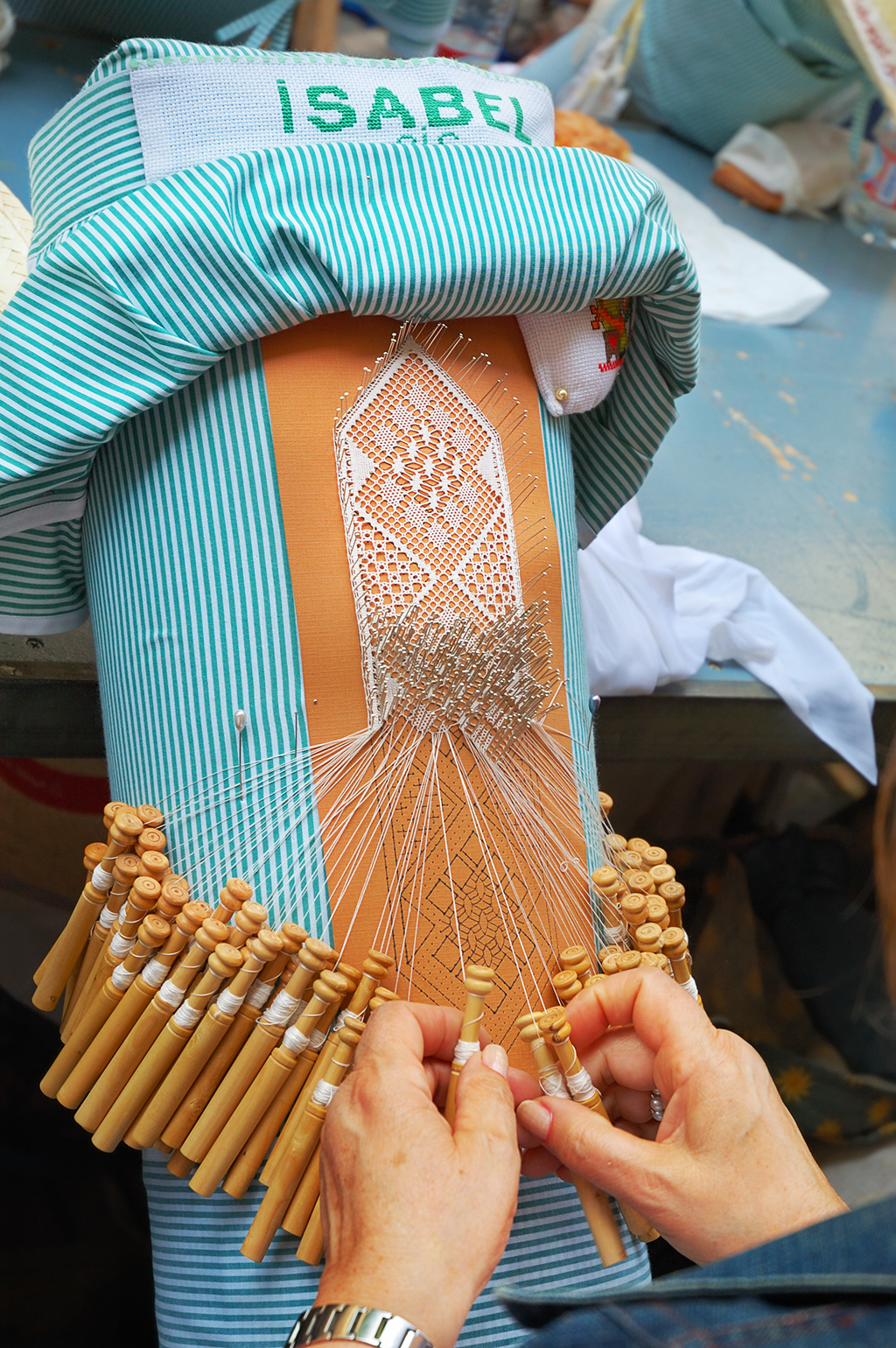
Call it bobbin lace, pillow lace, bone lace or simply lacework, this technique, in which thread, pins and shuttles are dexterously combined, may not compete with sophisticated lace making machines that produce complex designs but definitely it is much more artistic. I mean, you can enter a drawing in some computer program to automatically weave an elaborate piece of lace but you will lose art and tradition in the process.
This is something that is handed down from one generation to another, it is a passion and a hobby. This woman, Isabel, was participating in a local contest of puntaires which is the Catalan word for a person who does needlepoint work
There were women of all ages and even some young boys. They were extremely skillful and it was really amusing to be standing there witnessing the stubborn endurance of this ancient medieval craft that is reluctant to disappear.
See also Bobbin Lace (Encaje de Bolillos), a previous post with a brief explanation of the process and an illustrative video.
This is something that is handed down from one generation to another, it is a passion and a hobby. This woman, Isabel, was participating in a local contest of puntaires which is the Catalan word for a person who does needlepoint work
There were women of all ages and even some young boys. They were extremely skillful and it was really amusing to be standing there witnessing the stubborn endurance of this ancient medieval craft that is reluctant to disappear.
See also Bobbin Lace (Encaje de Bolillos), a previous post with a brief explanation of the process and an illustrative video.